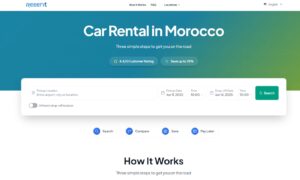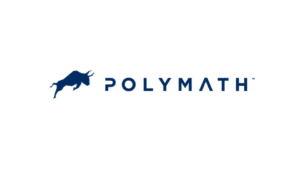Consumers demand convenience, transparency, and efficiency in every aspect of their lives, including their insurance decisions. The emergence of digital brokers and marketplaces has revolutionized the insurance space, making it easier than ever for individuals to compare, select, and manage insurance policies. These platforms bridge the gap between traditional insurance models and modern consumer expectations, providing tailored solutions with a click of a button.
What Are Digital Brokers and Marketplaces?
Digital brokers and marketplaces are online platforms that allow consumers to explore, compare, and purchase insurance products from various providers. Unlike traditional brokers, who often operate through face-to-face interactions or lengthy phone calls, digital platforms leverage technology to streamline the process. By utilizing algorithms, big data, and user-friendly interfaces, these platforms offer personalized recommendations and real-time comparisons.
Key Characteristics of Digital Brokers:
Operate entirely online, eliminating the need for physical offices.
Provide real-time quotes from multiple insurers.
Use advanced algorithms to match consumers with policies tailored to their needs.
Offer tools for managing and renewing policies.
Defining Marketplaces:
Marketplaces, on the other hand, serve as aggregators. They showcase products from various insurance providers, enabling consumers to compare prices, features, and benefits side by side. Some marketplaces also integrate digital brokers’ services, offering end-to-end solutions from discovery to purchase.
The Benefits of Digital Insurance Platforms for Consumers
The transition to digital brokers and marketplaces has brought numerous advantages for consumers. Let’s explore the key benefits:
Convenience
Gone are the days of scheduling appointments with brokers or visiting multiple insurers. Digital platforms enable consumers to access a wide range of insurance options anytime, anywhere. This 24/7 availability aligns with the modern lifestyle, allowing users to make decisions at their own pace.
Transparency
One of the biggest challenges with traditional insurance shopping is the lack of clarity. Digital platforms address this issue by providing detailed information about each policy, including coverage, exclusions, and pricing. This transparency empowers consumers to make informed decisions.
Cost-Effectiveness
Digital brokers often have lower operational costs compared to their traditional counterparts. These savings are frequently passed on to consumers in the form of lower premiums or reduced service fees. Moreover, the ability to compare multiple policies side by side ensures that consumers can find the best value for their money.
Personalization
Using data analytics and AI, digital platforms can assess an individual’s needs and preferences to recommend policies that are most suitable. For instance, a young professional might receive suggestions for term life insurance, while a family could be guided towards comprehensive health coverage.
Speed and Efficiency
What used to take days or even weeks can now be accomplished in minutes. From generating quotes to completing the purchase, digital platforms streamline the entire process, saving consumers valuable time.
Accessibility
Digital brokers and marketplaces are designed to be user-friendly, often featuring intuitive interfaces and straightforward navigation. This accessibility ensures that even individuals with limited technical skills can easily find and purchase insurance.
How Digital Platforms Simplify Insurance Choices
The insurance industry is inherently complex, with numerous providers, policy types, and jargon that can overwhelm consumers. Digital platforms simplify this by:
Centralizing Information:
Consumers no longer need to visit multiple websites or offices to gather information. A single platform consolidates options from various providers.
Demystifying Terms:
Many platforms include glossaries and FAQs to explain common insurance terms, making it easier for users to understand what they’re buying.
Providing Customizable Filters:
Users can filter results based on their preferences, such as premium range, coverage limits, or specific benefits.
Offering Customer Reviews:
Some platforms feature reviews and ratings, giving consumers insights into the experiences of other policyholders.
The Role of Technology in Digital Insurance Platforms
Technology is the backbone of digital brokers and marketplaces. Several innovations have made these platforms possible:
Artificial Intelligence (AI)
AI algorithms analyze consumer data to provide personalized recommendations. They also power chatbots that offer instant customer support, enhancing the user experience.
Big Data
By aggregating and analyzing vast amounts of data, digital platforms can identify trends and offer insights that benefit both consumers and insurers. For example, big data enables platforms to predict which policies might appeal to a specific demographic.
Blockchain Technology
Blockchain ensures secure transactions and reduces fraud by creating transparent, tamper-proof records. Some platforms use blockchain to streamline claims processing, further improving efficiency.
Mobile Optimization
With more consumers relying on smartphones, many platforms prioritize mobile-friendly designs. This ensures seamless access and functionality across devices.
Challenges and Limitations
While digital brokers and marketplaces offer numerous advantages, they’re not without challenges.
Data Privacy Concerns
Collecting and processing consumer data raises concerns about privacy and security. Platforms must comply with stringent regulations and implement robust safeguards to protect user information.
Limited Human Interaction
Some consumers prefer the personalized touch of a traditional broker. While chatbots and AI strive to replicate this, they may not fully address the nuances of complex insurance queries.
Information Overload
The abundance of options can sometimes overwhelm consumers, leading to decision fatigue. Platforms must strike a balance between offering variety and simplifying choices.
Regulatory Compliance
Insurance is a heavily regulated industry, with rules varying across regions. Digital platforms must navigate these complexities to ensure compliance, which can be resource-intensive.
The Future of Digital Insurance Platforms
The evolution of digital brokers and marketplaces is far from over. Several trends are shaping their future:
Integration with IoT Devices:
Wearables and smart home devices can provide real-time data, enabling platforms to offer dynamic insurance options based on actual usage.
Enhanced AI Capabilities:
Advanced AI could enable even more precise risk assessments and personalized recommendations.
Expansion into Emerging Markets:
As internet penetration increases, digital platforms are poised to make insurance accessible to underserved populations in developing regions.
Hybrid Models:
To cater to all consumer preferences, some platforms may combine digital tools with human advisors, offering the best of both worlds.
Conclusion
Digital brokers and marketplaces have transformed the insurance industry, putting consumers in control of their choices. By leveraging technology, these platforms simplify complex processes, enhance transparency, and deliver personalized solutions. While challenges remain, the continuous evolution of digital insurance platforms promises a future where insurance is not just a necessity but a seamless, user-friendly experience. For consumers, this means fewer headaches, better coverage, and more time to focus on what truly matters.



































